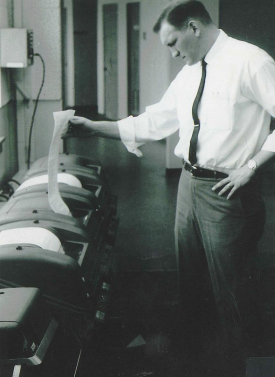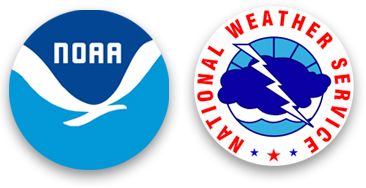STOP SHOUTING THE FORECAST! - National Weather Service Heritage

STOP SHOUTING THE FORECAST!
By Chris Geelhart (chris.geelhart@noaa.gov)In 1928, the Weather Bureau introduced teletype machines in its offices. Teletypes, basically telephone lines connected to typewriters, replaced the telegraph as the primary method for communicating weather information.
Teletypes only allowed the use of upper case letters. Punctuation also was limited; for example, an apostrophe would be represented by a "/" symbol, and a comma was represented by an ellipsis. Hyphens would cause issues as well. Thus, a sentence such as "We're going to have 2-3 inches of snow, and temperatures of -15" would be written as:
"WE/RE GOING TO HAVE 2 TO 3 INCHES OF SNOW...AND TEMPERATURES OF 15 BELOW."

Teletypes were replaced by the AFOS computer network in the 1980's, and yet the all-caps format persisted. While an AFOS terminal could have text entered in mixed case, it was forced to upper case when saved. And when AFOS was replaced by the AWIPS computer network in the late 1990's, the upper case format refused to die.
As the Internet and E-mail became commonplace and made the teletype obsolete, the use of all-caps became synonymous with angry shouting. Recognizing this, the NWS proposed the use of mixed case a number of times beginning in the 1990's, but it took more 20 years to phase out the last of the old equipment that only recognized teletype format.
After some limited testing at specific offices, the NWS finally began allowing for mixed-case products on May 11, 2016. The format began with less critical products such as Area Forecast Discussions and Public Information Statements, then transitioned to severe weather warnings and forecasts. However, some products with international implications, such as aviation forecasts, remain in upper case per international agreements that standardize weather product formats across national borders.
Additional Reading:
News Release Announcing Shift to Mixed-Case Products: https://www.noaa.gov/media-release/national-weather-service-will-stop-using-all-caps-in-its-forecasts
